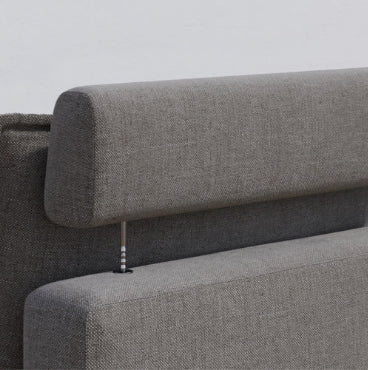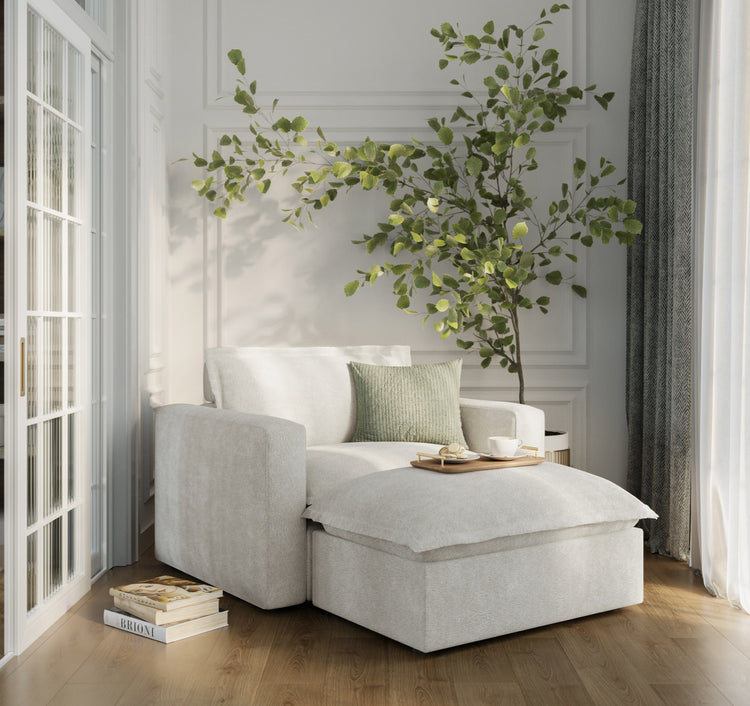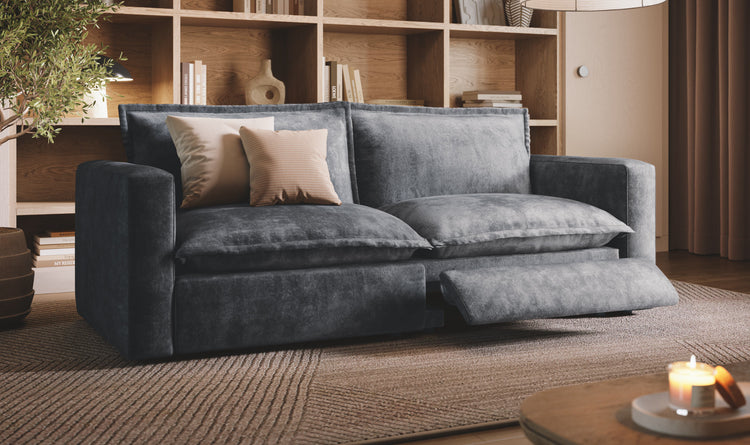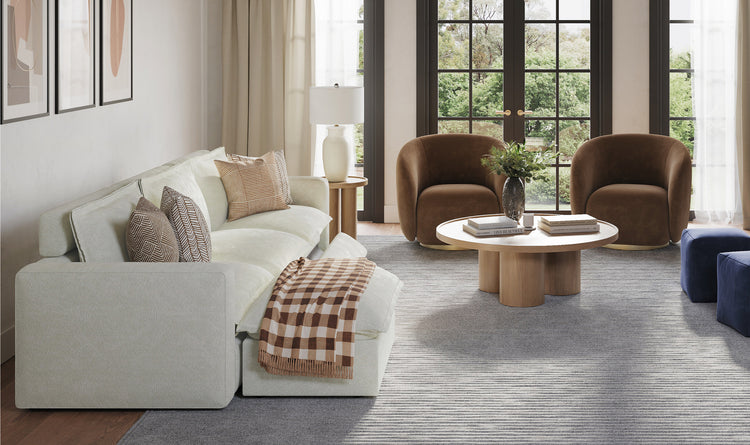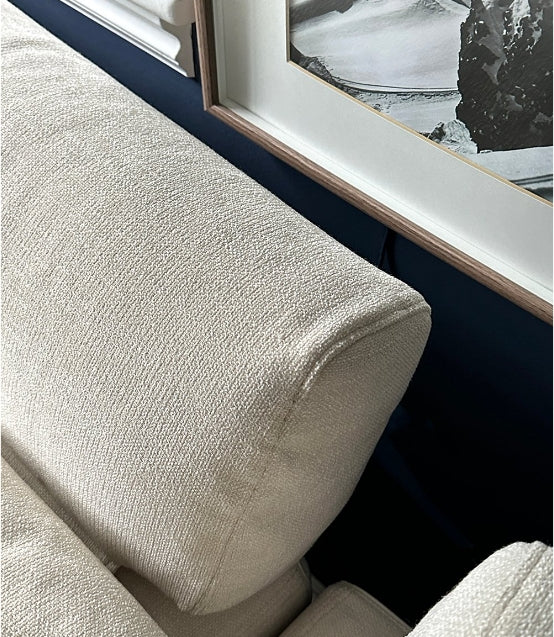Is your once-cushy couch starting to feel a bit lumpy and worn out? If plopping down on it makes you sink in a little too deep, or if it's looking a bit shabby and out of place, it might be time for an update. Let's walk through some of the signs that say it might be time to bid farewell to your current couch and welcome a fresh addition to your living space. Bring back the comfort and style to your living room!

How to Recognize When Comfort Fades
When was the last time you really felt at ease on your couch? If settling into your sofa no longer feels like sinking into a cloud but rather like a reminder that you're not as young as you used to be, comfort might be calling for an upgrade.
Comfort is king when it comes to couches. But how can you tell if your couch is no longer the throne of relaxation it once was? Here's what to look for:
- Sagging Seats: Take a moment to eye your couch from across the room. If it resembles a well-worn hammock more than a sturdy seat, those sagging areas are clear indicators that the support system has seen better days. A good couch should bounce back, not hold onto your imprint like a memory foam mattress bidding farewell to its resilience.
- Unfamiliar Noises: Do you hear creaks and groans every time you plop down? That symphony of sounds isn't your couch singing your praises; it's a signal that the internal structure, from springs to frame, might be in distress.
- Aches and Pains: Think about how you feel after spending some time lounging. Are you getting up with new aches or a stiff back? Your couch's lack of support could be subtly telling you that it's no longer able to provide the comfort it once promised.
Your couch should serve as a haven of comfort. If instead, it's become a source of discomfort, it could very well be time to start browsing for a new one. After all, your comfort at home is invaluable, and ensuring your couch contributes positively to it is essential.
Wear and Tear: Visible and Invisible Clues
Your couch may have been through thick and thin, but physical signs of wear and tear can suggest it's time for a replacement. Let's uncover some clues that indicate your sofa might be ready to take a bow.
Firstly, engage in a bit of detective work and inspect your couch for these visible signals:
- Fabric Woes: If your couch's upholstery is riddled with stains that refuse to leave, or if the fabric has become threadbare or torn in places, these are clear signs that your couch is wearing out its welcome.
- Cushion Condition: Are the cushions on your couch flat and lifeless? If fluffing them feels like trying to pump air into a tire with a hole, they've lost their plumpness - an obvious cue that comfort has deflated.
- Frame Damage: A sturdy frame is the skeleton of a good couch. If you feel wood where padding should be or notice any part of the frame poking out, it's a serious red flag.
On the flip side, there are less apparent indicators that might be telling you it's time:
- Subtle Squeaks and Shifts: While a noisy couch was mentioned earlier, paying close attention to any new sounds or movement when you sit can unveil issues with the invisible parts of your couch's anatomy.
- The Sniff Test: Sometimes wear isn't just about what you see – it's also about what you smell. If odors linger despite your best cleaning efforts, it could mean that spills have penetrated deep into the cushions, leading to mildew or mold.
Your couch should look inviting and stay fresh. When wear and tear compromise not only its aesthetics but also its structural integrity, consider this a nudge to start thinking about a replacement.
Sneaky Guests: Allergens and Hygiene Factors

It's not just what you can see on your couch that matters-it's also what you can't. Over time, a couch can become a haven for unseen guests that affect your living space's cleanliness and well-being.
Here are some hygiene-related red flags to watch out for:
- Persistent Stains and Odors: If no amount of scrubbing or air fresheners can banish certain stains or odors, it indicates that spills have soaked deep into the fabric and padding, where they become a breeding ground for bacteria. This is not just an aesthetic issue, but a matter of hygiene too.
- The Allergy Test: Notice more sneezing or itching when you're lounging on your sofa? It could be hosting allergens like pet dander, dust mites, or mold spores. Over time, these unwelcome squatters can make your couch unhealthy, particularly for those with allergies or respiratory issues.
- Safety First: Finally, don't overlook safety. A compromised couch with broken springs or a sagging frame isn't just uncomfortable-it could actually cause injury through unexpected collapses or protruding pieces.
Think of your couch as an environment: it should be a safe, clean, and healthy one. When it starts compromising any of these elements, it's not just about comfort or style; it's about your health. And that's a priority that deserves immediate attention, possibly in the form of a new couch that will hold up under scrutiny-not only to the eye but also to the touch and even to the nose.
Sofa Styles: When to Adapt and Update

As we grow and change, so do our homes. The couch that once fit perfectly with your old apartment's shabby chic vibe might stick out like a sore thumb in your new minimalist space. Here's how to tell if your sofa is keeping up with the times – or lagging woefully behind.
- Design and Decor Discord: If you've redecorated and your couch now looks like a relic from a bygone era, it may be time for an update. A sofa should complement your space, not clash with it.
- Sizing Matters: Maybe you've moved to a larger home and your sofa looks lost, or you've downsized, and the couch is swallowing your living room whole. Your furniture should be proportional to your living area to maintain balance and flow.
- Lifestyle Shifts: Perhaps the biggest sign it's time to replace your couch is a change in your lifestyle needs. If movie nights have turned into sleepovers and your sofa can't transform into a bed, or if family gatherings now require more seating than your current setup allows, your couch is no longer serving its purpose.
A couch isn't just about aesthetics; it's also about functionality. As your life evolves, your furniture should evolve with you to support the activities you cherish most. When your couch stops meeting these needs, consider it an opportunity to find a new one that will rise to the occasion of your current life stage.
Smart Sofa Spending: Repair or Replace?
Getting a new couch is more than just picking something that looks nice in your living room. It's about smart spending, too. Let's talk about how to decide if it's better to fix what you've got or save up for a brand-new comfy spot.
- Fixing Costs vs. New Couch: If you keep spending money to fix your old couch, those bills can add up fast! Sometimes, it's cheaper in the long run to stop repairing and start fresh with a new one.
- Think About the Long Haul: Sure, buying a couch can cost a pretty penny, but a sturdy, high-quality one will last you years and stay comfy the whole time. Plus, they often come with guarantees that have your back if something goes wrong.
- Look for Deals: A great couch doesn't have to make your wallet cry. There are lots of awesome sofas out there that look good, feel good, and still leave you some cash for movie night snacks. Just take some time to hunt around for those bargains.
- Your Couch is an Investment: Your couch isn't just where you flop down to watch TV-it's the centerpiece of your hangout space. Putting money into a solid choice can make your day-to-day life nicer. And if you ever sell your place, a good-looking sofa can even help bump up your home's selling price.
When you're stuck between fixing your old couch or getting a new one, think about the future. Will a new sofa make your life easier and more comfortable? Sometimes, paying a little more now means you'll save money and headaches later-and enjoy lots of cozy moments in your lovely home.
Making an Informed Choice
Choosing a new couch is more than picking out colors and fabrics; it's about making an informed decision that suits your lifestyle. Here's how to ensure you're selecting a sofa that will stand the test of time.
- Try Before You Buy: When you can, visit showrooms to test different models. Sit down, lie down, and see how you feel. After all, what looks great online might not match your comfort expectations in person.
- Seek Opinions: Customer reviews and ratings can be incredibly helpful. They provide real-life insights into how the couch holds up over time. It's also worth asking friends and family for recommendations if they've recently made a similar purchase.
- Consult the Experts: If you're unsure, don't hesitate to tap the knowledge of sales assistants or interior designers. Their expertise can guide you through styles, materials, and designs that work best for your needs.
A little bit of research and advice can go a long way. By taking the time to thoroughly vet your options, you'll make a savvy choice that brings comfort and happiness to your home for years to come.
The Final Say: When to Swap Out Your Sofa
Knowing when to replace your couch is all about watching for the signs that it's lost its comfort, style, and shape. If your sofa has become a source of discomfort or an eyesore in your revamped living room, it may be time to seek out a new one. Remember, a good couch is an investment in your home's feel and appearance. It's not just a seat-it's a part of your daily life and comfort. So don't compromise; choose a couch that will continue to be your relaxation haven for years to come. Whether you decide to fix or replace, make sure it's a decision that brings back the joy and comfort to your living space.

